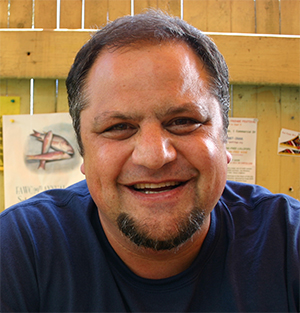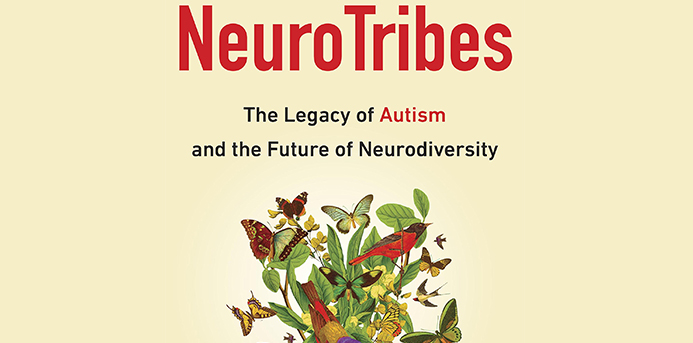Journalist and author Steve Silberman opened his recent Family Action Network (FAN) talk with a great dose of enthusiasm: “We’re living in a very exciting time because society is on the brink of a major transformation.” Silberman could be referring to anything from politics to education (and, in the end, he’s kind of talking about both), yet his zeal is squarely directed at a concept called “neurodiversity.”

Neurodiversity is the idea — that shouldn’t be as revolutionary as it is — that neurological differences like autism, dyslexia and ADHD be recognized and respected as human variation, rather than strictly disorder. Or as professor, author and autism activist Temple Grandin says: “Different, not less.”
As is the case with all social shifts, the key is a deeper understanding; in this case, it’s of alternate styles of thinking and learning and their associated challenges. Silberman became hooked on the topic in 2001 when he penned an article for Wired magazine titled, “The Geek Syndrome,” about the surge of autism diagnoses in Silicon Valley. His research forced him to confront his own inaccurate stereotypes.
Now he’s spent the past five years learning as much as he could to write his latest book, “NeuroTribes: The Legacy of Autism and the Future of Neurodiversity.” In the process Silberman uncovered the true history of autism as well as the disconnect between research dollars and the lives of the autistic.
Autism History Got It Wrong
Autism’s most cited historical timeline goes like this: In 1943, Child Psychiatrist Leo Kanner issued a report of 11 children he described as “low functioning” and employed the term “early infantile autism” in relation to their constellation of severe behaviors. His definition was narrow and over the years he turned many children away without a diagnosis because they didn’t perfectly align with his findings.
Earlier, in the mid-1930s in Germany, an Austrian pediatrician named Hans Asperger began working with a similar population of four children “for whom our intelligence tests are broken.” He scheduled dance, music and poetry classes for his “little professors” (as he called them due to their deep knowledge on topics they were interested in). In 1944, he wrote about his findings.
Fourteen years ago in The Atlantic, Silberman himself dubbed this “one of the uncanny synchronicities of science with autism first recognized on two continents nearly simultaneously.” But he was to discover that coincidence had a name: Georg Frankl. Frankl was the head of research under Asperger before being rescued from the holocaust by Kanner. He was the hidden link between the two men.
While Asperger’s ideas were obscured by war, Kanner became renowned for his knowledge of autism. Kanner defined the condition as rare and was an advocate of institutionalization for those diagnosed; his limited definition of autism differed from Asperger’s more expansive model which included a spectrum of abilities and behaviors. Ultimately, Kanner’s widely accepted views stigmatized autism and kept many who needed services from being diagnosed.
Don’t Call It an “Epidemic”
Understanding autism’s thwarted history is imperative to making the leap that it’s not an epidemic at all; in fact, autism has always been there, but it’s often been overlooked or misdiagnosed. In the late 1980s and early 90s, Kanner’s opinions began being replaced with Asperger’s views.
At the same time, Silberman says, the first diagnosed generation grew up and “people all over the world began seeing autistic adults for the first time.” Then the 1994 American Psychiatric Association’s diagnostic manual (DSM-III) broadened the diagnostic criteria for the “autism spectrum disorders” outlined in the 1980 version. The wider definition gave way to more diagnoses.
It was the perfect storm of autism awareness and all of that newfound attention quickly became mistakenly deemed an “epidemic.” But the simple truth was that autism was finally being accurately identified.
Misspent Research Dollars
The good news is that as buzz about a topic in the scientific community increases, so do the funds that get funneled its way for research. For autism, that means lots of money and effort going toward uncovering its causes. Everything from emotionally frigid parents (i.e., icebox mothers) to vaccines have been blamed for autism. Silberman shares the wry headline of a blog post by a friend and fellow writer: “This just in: Being alive linked to autism.”
More disconcerting than the 50-odd dead ends explored by researchers is the idea that the vast majority of funds are being spent to discover its source to work toward prevention, rather than addressing the real-life needs of current autistic individuals. “Imagine if society had put off the issue of civil rights until the history of genetics were clear, delayed the legalization of gay marriage until the causes of homosexuality were nailed down, or denied wheelchair users access to public buildings while insisting that someday, with the help of science, everyone will walk,” says Silberman. “That’s what we’ve been doing with autism.”
Instead, Silberman would love to see researchers refocus and increase attention on what factors help autistic adults lead successful lives. This idea goes hand-in-hand with the idea of neurodiversity — accepting rather than changing those around us.
What Next?
The internet has and continues to help autistic individuals connect with each other and form communities. They’ve found their “tribe” as Silberman says. Additionally, the internet has provided more remote work possibilities for those who have difficulty discerning nonverbal cues and the emotional sharing common in workplaces.
“The strengths of those with autism offer potential boons to society if we’re able to provide support, housing, healthcare, and teaching methods for individual learning styles,” says Silberman. “By autistic standards, the normal human brain is easily distractible, excessively social, and lacks attention to detail.” There is room and a need for all kinds of people; he’d like to see us all think more intelligently and compassionately about those who think differently.
Silberman says, “I spent five years excavating a lost past. Now I’m eager to look toward the future.”
More from Make It Better:

